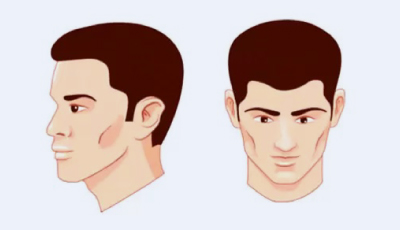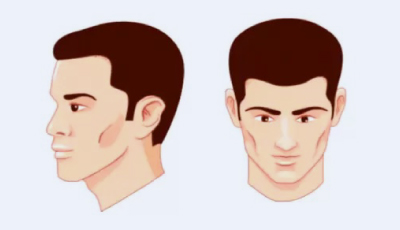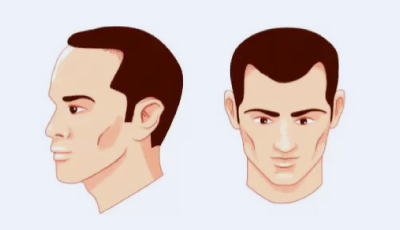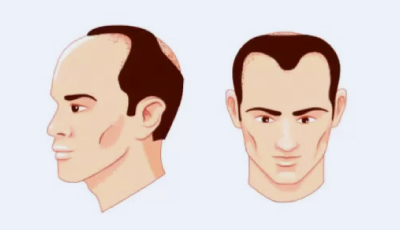Norwood Hamilton Scale
Understand your stage of hair loss with the Norwood-Hamilton Scale and explore the best treatment options for you.
Featured in:
Hair loss can be a challenging experience, but understanding where you stand on the Norwood-Hamilton Scale can make all the difference. Whether you’re noticing a subtle change in your hairline or dealing with more advanced thinning, this scale offers a clear roadmap to identify your hair loss stage and explore the most effective treatment options. If you’re considering a hair transplant in Turkey, knowing your stage is the first step toward making informed decisions and achieving the best possible results.
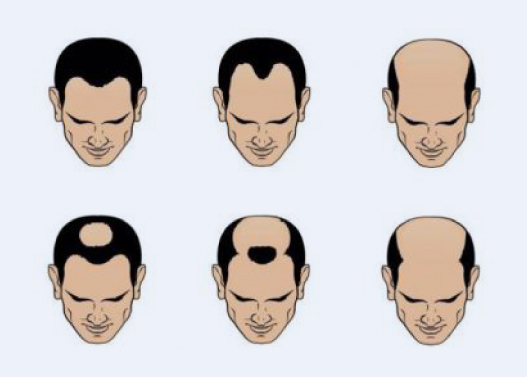
What is Norwood-Hamilton Scale?
The Norwood-Hamilton Scale is a widely recognized classification system used to assess the severity of male pattern baldness. Originally developed by Dr. James Hamilton in the 1950s and later refined by Dr. O’Tar Norwood, this scale breaks down hair loss into seven stages, ranging from a full head of hair to advanced baldness. Each stage represents a different pattern and degree of hair thinning, helping both individuals and medical professionals evaluate hair loss progression accurately. The scale also includes a Class A variant, which highlights a less common, more uniform pattern of recession.
Understanding where you fall on the Norwood-Hamilton Scale is a crucial first step in determining the most suitable treatment options, whether it’s preventative care, medical therapies, or hair restoration procedures.
Norwood Hamilton Scale FAQ

Didn’t find your question?
You can ask any questions you have regarding Norwood Hamilton Scale right now!
A hair transplant is typically recommended for individuals in Stages 3 to 5 of the Norwood-Hamilton Scale. At these stages, hair loss is noticeable but not yet extreme, allowing for effective restoration with a balanced number of grafts. Earlier stages (1-2) usually benefit more from preventative treatments, while advanced stages (6-7) may require a higher graft count and realistic expectations regarding coverage and density.
The number of grafts needed varies based on the extent of hair loss:
Stage 1-2: Usually, a transplant is not needed.
Stage 3: Approximately 1,500-2,000 grafts.
Stage 4: Between 2,500-3,000 grafts to cover both the hairline and crown.
Stage 5: Around 3,000-4,000 grafts, focusing on filling larger bald areas.
Stage 6: May require 4,000+ grafts, with a focus on achieving natural-looking density.
Stage 7: Depending on the donor area, graft needs may exceed 5,000, with additional strategies like scalp micropigmentation to enhance results.
The Norwood-Hamilton Scale is specifically designed for male pattern baldness, which often presents as receding hairlines and distinct bald patches. For women, hair loss typically occurs in a more diffuse pattern, which is better assessed using the Ludwig Scale or the Savin Scale. These scales focus on the overall thinning of the hair, particularly on the top of the scalp, and offer a more accurate representation of female hair loss patterns.
In early stages (1-3), hairline design focuses on refining and subtly restoring the natural hairline with fewer grafts. This approach emphasizes maintaining a natural look while preserving the donor area. In advanced stages (4-7), the goal shifts to creating an illusion of density, prioritizing strategic placement of grafts to cover larger bald areas. The hairline may be designed higher or with a softer contour to match the available grafts and maintain a balanced appearance.
Yes, hair loss at early stages can often be managed effectively with non-surgical treatments, such as:
Medications: Minoxidil (topical) and Finasteride (oral) can help slow hair loss and stimulate regrowth.
PRP Therapy: Injecting platelet-rich plasma into the scalp to promote hair follicle health.
Low-Level Laser Therapy (LLLT): Stimulates hair growth through light therapy.
Lifestyle Changes: Maintaining a healthy diet, reducing stress, and using gentle hair care products.
These treatments can help preserve existing hair and delay the progression to more advanced stages.
For Stage 3, where hair loss becomes more noticeable, a combination approach is often recommended:
Medical Treatments: Minoxidil and Finasteride to support hair health.
Non-Surgical Therapies: PRP and LLLT can enhance hair strength and thickness.
Surgical Option: A hair transplant, using FUE (Follicular Unit Extraction) or DHI (Direct Hair Implantation), can effectively restore the hairline and add density where needed.
At Stage 4, a hair transplant can deliver significant improvements, filling in both the hairline and crown. With 2,500 – 3,000 grafts, patients can expect a natural-looking hairline and enhanced coverage at the top of the scalp. The final results depend on factors like donor hair quality, overall health, and adherence to aftercare guidelines.
A full restoration at Stage 6 is challenging but achievable with the right approach. This stage requires a high number of grafts (4,000+) and a strategic focus on creating the appearance of density and coverage. Combining a hair transplant with techniques like scalp micropigmentation (SMP) can enhance the visual results. However, achieving full coverage might not always be possible, and realistic expectations are important.
While Stage 7 is the most advanced stage of hair loss, a hair transplant can still provide aesthetic improvements. However, due to limited donor hair, results may focus on framing the face or creating a more natural appearance rather than full coverage. Alternative treatments like SMP or medical-grade wigs might also be considered for enhanced results. Consulting with a hair restoration specialist is essential to determine the best personalized approach.
